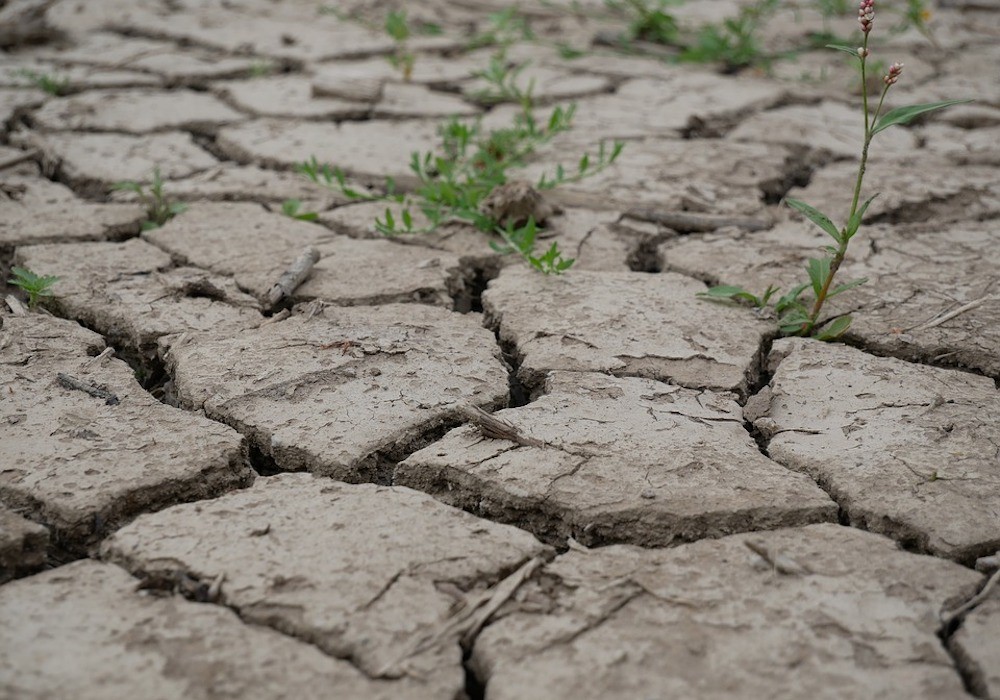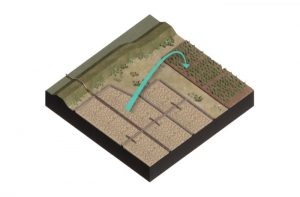Physical ripening
Dry fall is the moment when evaporation flux exceeds the water flux at the top of the sludge due to consolidation. At this moment, it does not mean that the consolidation process will stop, but that a number of ripening-related processes will occur including physical ripening.
Physical ripening refers to fine sediment being converted to a more compact material beyond recall. This is done by exposition to drier hydrological conditions than those it can maintain equilibrium with (Rijniersce, 1983). Physical ripening makes fine sediment more aerated and permeable. The newly materialized soil beholds physical properties which depend on the new hydrological conditions. The irreversibility of consolidation refers to the inability of face-to-face orientated clay aggregates to reorient itself once porewater flows back between the flocs. The strong honeycomb structure of aggregates does prevent reintroduction of water. This honeycomb structure is composed of only clay particles. Therefore, physical ripening can only occur when enough clay aggregates are available in the sediment; clay content>8% and organic matter>3% (Pons & Zonneveld, 1965). This means that very sandy soils do not consolidate and ripen.
When consolidation decreases the water content and permeability, the soil shrinks. Shrinkage induces crack formation of the soil, hence increasing the permeability slightly (Figure 3). The greater part of evaporation and therefore further ripening occurs via shrinkage cracks (Ritchie & Adams, 1974). Evaporation facilitates a higher degree of compaction compared to solely consolidation, because the magnitude of matric pressure caused by evaporation is several factors larger compared to matric pressure caused by overburden (Vermeulen et al., 2003). Matric pressure is the cohesive attractive force between a soil particle and water in the pore spaces.

The degree of ripening can be quantified, see Equation 1 (Pons & Zonneveld, 1965). Here, n is the degree of ripening, W is the ratio between water binding capacity per gram organic matter and water binding capacity per gram clay (3 for dredged material (Geodelft, 1987)). P is the gram water bounded to 1 gram of non-colloidal material (dry soil without clay and organic matter). L is the weight percentage of clay with respect to all dry matter. H is the weight percentage of clay with respect to all dry matter. W is the water content. The lower n becomes, the more ripened the soil is becoming.


